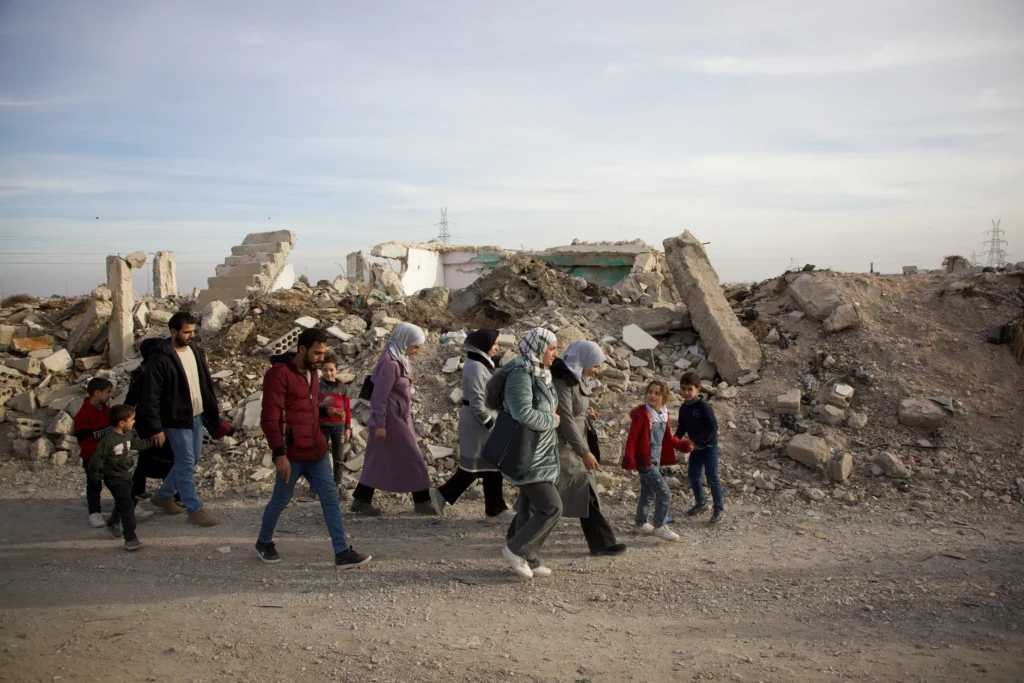Syrians Returned to Their Homes, Only to Find Them Destroyed | trendsnip

Damascus, Syria – Nizar al-Madani, 34, stood with tears in his eyes as he surveyed the ruins of Qaboun, a neighbourhood in Syria’s capital, Damascus, that he once called home. After seven years of displacement, he returned on Tuesday to find the area levelled to the ground.
“We’d heard that the regime had demolished the neighbourhood, but seeing it with my own eyes was utterly shocking,” al-Madani said. “When we left in 2017, many buildings were damaged, but now there’s nothing left… the regime has erased all signs of the neighbourhood.”
He wasn’t alone in his grief. Other displaced residents of Qaboun, many of whom had fled their homes, were walking the streets, trying to piece together the locations of their houses amid the rubble.
Revenge and Destruction
The regime of Bashar al-Assad has long been accused of deliberately destroying areas that resisted its rule, implementing policies that facilitated this widespread devastation. One such policy was Law No. 10 of 2018, which created new urban zones in war-torn areas and required displaced people to prove ownership of their properties within 30 days. Failure to do so meant the state could seize the property.
Many residents were too afraid to return, fearing arrest or being charged with opposing the Assad regime. Nadeedah Hannawi, 50, spoke to Al Jazeera about the difficulties she faced. “We couldn’t prove ownership of our home. We fled to the north, and without the right documents, we couldn’t make our case.”
“The regime didn’t just force us out; it sought to steal everything we had, even our memories,” she said. “We can’t even locate the cemetery where our loved ones are buried.”
Despite the loss, Hannawi’s resolve remains strong. “The most important thing today is that the criminal Bashar al-Assad has fled, and his regime has fallen. Our land will be returned to us, and we will rebuild together.”
Mahmoud Jahbar, 53, also shared his hopes. “The regime destroyed our homes, but our spirit remains unbroken. We’re determined to rebuild so that our children will have a place to call home again.”
Credit: Al Jazeera
For more updates on Middle East news, trends, finance, and lifestyle, stay connected with Trendsnip.
SUMMARY
Nizar al-Madani returned to his home in Qaboun, Damascus, after seven years of displacement, only to find his neighbourhood levelled. Many others, too, were shocked to find that their homes and memories had been erased by the regime of Bashar al-Assad. Law No. 10 of 2018, which allowed the regime to seize properties from displaced people who could not prove ownership, played a role in further displacing families. Despite the destruction, residents like Nadeedah Hannawi and Mahmoud Jahbar remain hopeful and determined to rebuild their lives and homes, with the fall of Assad’s regime bringing a glimmer of hope for the future.
About the Author
Michael
Administrator
Michael David is a visionary AI content creator and proud Cambridge University graduate, known for blending sharp storytelling with cutting-edge technology. His talent lies in crafting compelling, insight-driven narratives that resonate with global audiences.With expertise in tech writing, content strategy, and brand storytelling, Michael partners with forward-thinking companies to shape powerful digital identities. Always ahead of the curve, he delivers high-impact content that not only informs but inspires.



